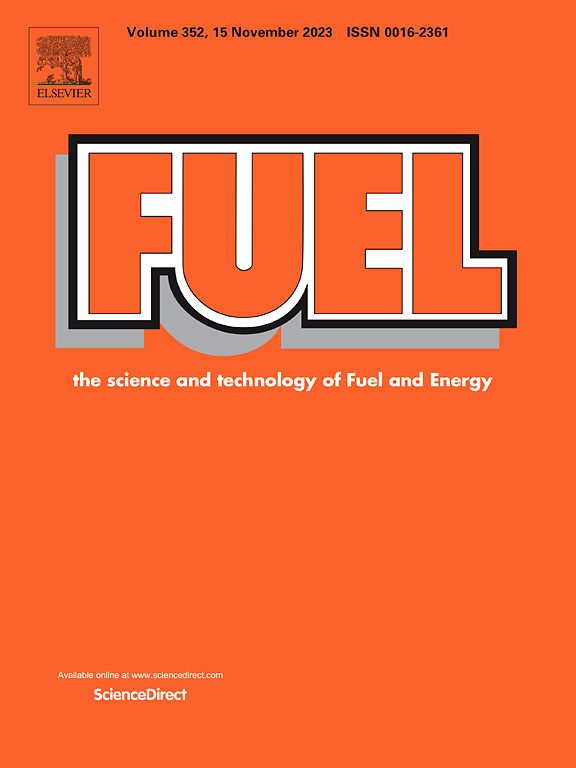利用原位高温阶段显微镜对煤气化渣残碳含量及氧化收缩行为进行定量评价
IF 7.5
1区 工程技术
Q2 ENERGY & FUELS
引用次数: 0
摘要
从无机组分中分离残余碳已被认为是实现煤气化渣高价值利用的必要策略,但直接检测残余碳在煤气化渣中的分布的研究有限。本研究对CGS进行湿筛、酸洗或灰化预处理,并通过原位高温级显微镜研究上述样品在氧化过程中的收缩行为。结果表明:含碳CGS以碳骨架为主,细粒灰颗粒包裹或嵌套在碳颗粒孔隙中;在550 ~ 650℃温度范围内,试样的收缩主要与残余碳的氧化有关。因此,可根据收缩特性定量评价CGS中残余碳含量。建立了全粒径范围内CGS的收缩率与残余碳含量之间的非线性相关关系,并验证了导出的拟合公式的可靠性。此外,在750 ~ 900℃范围内,CGS的收缩与残余的C=O和O=C-O官能团与金属键之间的成键相互作用有关。本研究可通过直接考察CGS中残余碳的分布来评价其可分性,为CGS中碳灰的有效分离提供重要指导。本文章由计算机程序翻译,如有差异,请以英文原文为准。

Quantitative assessment of residual carbon content and oxidative shrinkage behavior of coal gasification slag through in situ high-temperature stage microscope
Separation of residual carbon from inorganic components has been recognized as an essential strategy for the high-value utilization of coal gasification slag (CGS), while limited studies were conducted to directly examine the distribution of the residual carbon in CGS. In this study, CGS was pretreated by being wet-sieved, acid-washed or ashed, and the shrinkage behavior of the above samples during the oxidation process were studied through in situ high-temperature stage microscope. The results indicated that the carbon-containing CGS predominantly exhibited a carbon framework and fine-sized ash particles were wrapped or nested within the pores of carbon particles. The shrinkage of the samples within the temperature range of 550–650 °C was mainly associated with the oxidation of the residual carbon. Therefore, the residual carbon content in CGS could be quantitatively assessed according to the shrinkage behavior. A nonlinear correlation between the shrinkage rate of CGS and the residual carbon content across the full particle size range was established and the reliability of the derived fitting formula was validated. In addition, the shrinkage of CGS within the temperature range of 750–900 °C was associated with the bonding interactions between residual C=O and O=C-O functional groups and metallic bonds. This research can evaluate the separability by directly investigating the distribution of residual carbon in CGS, which provides important guidance for the effective separation of carbon and ash in CGS.
求助全文
通过发布文献求助,成功后即可免费获取论文全文。
去求助
来源期刊

Fuel
工程技术-工程:化工
CiteScore
12.80
自引率
20.30%
发文量
3506
审稿时长
64 days
期刊介绍:
The exploration of energy sources remains a critical matter of study. For the past nine decades, fuel has consistently held the forefront in primary research efforts within the field of energy science. This area of investigation encompasses a wide range of subjects, with a particular emphasis on emerging concerns like environmental factors and pollution.
 求助内容:
求助内容: 应助结果提醒方式:
应助结果提醒方式:


